Archives
now browsing by author
Exploring the Future Development Trends of Powder Coatings
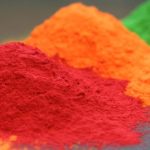
Powder coatings have emerged as a popular choice in the coating industry due to their durability, environmental friendliness, and versatile applications. As the demand for sustainable and high-performance coatings continues to rise, the future of powder coatings holds significant potential for further advancements. This article delves into the detailed trends shaping the future of powder coatings, encompassing technological innovations, environmental sustainability, and diverse application possibilities. Technological Advancements: The future of powder coatings hinges on technological advancements that aim toRead More …
Switching from Paint to Powder Coating: What You Need to Know
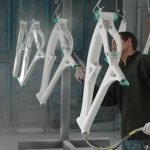
If you’ve been using paint for your coating needs, it may be time to consider switching to powder coating. Powder coating offers many advantages over traditional painting methods, including durability, environmental friendliness, and cost-effectiveness. However, before you make the switch, there are a few things you need to know. Firstly, powder coating requires a different application process than paint. Instead of being sprayed on like paint, the powder is electrostatically charged and then sprayed onto the surface of theRead More …
Join Us at the Middle East Coatings Show 2024!

We are thrilled to announce that Feihong, China’s leading manufacturer and exporter of powder coatings and polyester resins, will be participating in the Middle East Coatings Show 2024. Exhibition Details: Date: April 16-18, 2024 Booth No: Z6A01 DUBAI WORLD TRADE CENTER As a prominent player in the powder coatings industry, we are excited to showcase our innovative products, cutting-edge technologies, and commitment to quality at this prestigious event. The Middle East Coatings Show is a prime platform for industryRead More …
Polyester Resins for Powder Coating
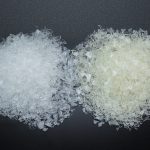
Powder coatings have revolutionized the coating industry, offering enhanced durability, environmental sustainability, and an extensive range of application possibilities. At the heart of these remarkable coatings lies polyester resins. This article delves into the intricacies of these resins, exploring their key features, benefits, and applications in the realm of powder coatings. Superior Adhesion and Bonding: Polyester resins are engineered to provide exceptional adhesion and bonding properties, ensuring a strong and long-lasting bond with various substrates. Whether it is metal,Read More …
Tips and Precautions for Powder Coating Spraying Process
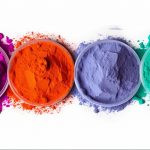
Powder coating is a popular method for enhancing the appearance and protection of metal surfaces. However, to achieve the best results, it is crucial to pay attention to certain factors and take preventive measures during the powder coating spraying process. This article will highlight some important considerations and provide valuable tips to ensure a successful powder coating application. Surface Preparation: Before applying powder coating, it is essential to properly prepare the surface. Make sure the metal surface is clean,Read More …
Common Problems and Solutions in Powder Coating Application
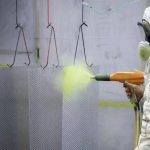
Powder coating is a widely used method for providing durable and attractive finishes on various substrates. However, during the application process, certain issues can arise, affecting the quality of the coated film. Understanding and effectively troubleshooting these common problems is essential for achieving desired results. In this article, we will explore solutions to common issues such as insufficient gloss, discoloration, orange peel texture, pinholes, and air bubbles in powder coatings. Insufficient Gloss: Curing time: Ensure the baking time isRead More …
Thermosetting Powder Coatings vs. Thermoplastic Powder Coatings: Exploring the Key Differences
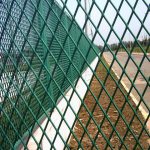
Among the different types of powder coatings, thermosetting powder coatings and thermoplastic powder coatings are two prominent options. Understanding their distinctions, including their specific applications, target substrates, and operational processes, is vital for selecting the most suitable coating for different scenarios. Thermosetting Powder Coatings: 1.1 Definition: Thermosetting powder coatings are polymer-based coatings that contain a crosslinking agent or resin. When exposed to heat, the crosslinking agent initiates a chemical reaction, causing the coating to undergo a curing process. OnceRead More …
Analysis of Resin Types and Characteristics of Powder Coatings: Choosing the Right Resin for Customized Coating Solutions

In the powder coating industry, the type of resin is considered a crucial factor that significantly impacts the coating’s properties. Different resin types endow powder coatings with distinct performance and applicability. This article provides in-depth analysis of the resin types and their characteristics, and discusses how to select the appropriate resin type to offer users customized and tailored coating solutions. Epoxy Resin: The Perfect Blend of Chemical Resistance and Mechanical Properties Epoxy resin is renowned for its exceptional chemicalRead More …
Pre-treatment of Powder Coatings: Achieving Excellent Coating Performance

Pre-treatment is a crucial part of the powder coating process. It can not only provide a good adhesion and protection to the coating surface but also effectively improve the coating performance and durability. This article will introduce the pre-treatment process before powder coating, help you understand its importance, and how to choose the appropriate pre-treatment method. Surface cleaning: Before powder coating, the coating surface needs to be thoroughly cleaned to ensure that the coating can be firmly adhered toRead More …
Efficient Techniques for Removing Powder Coating from Metal Surfaces
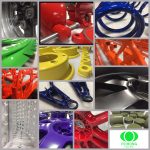
Powder coating is widely used to provide metal surfaces with durable and protective finishes. However, there are situations where the removal of powder coating becomes necessary. This blog post aims to provide valuable insights into effective techniques for removing powder coating from metal surfaces. Chemical Paint Strippers: Chemical paint strippers are commonly employed to remove powder coating from metal surfaces. These strippers consist of chemicals like methylene chloride or N-Methyl-2-pyrrolidone (NMP), which effectively break down the coating. To proceed,Read More …

 D5 Creation
D5 Creation